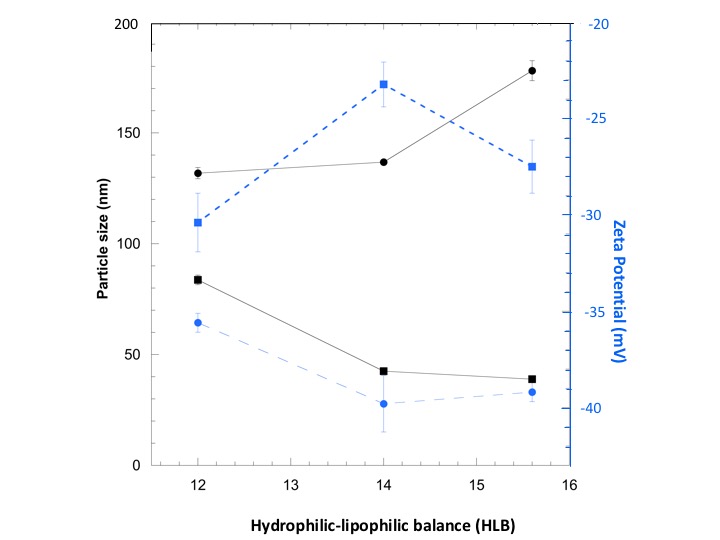 |
|
Red pepper (Capsicum annuum L.) oleoresin contain a diversity of carotenoids, which has been associated with lower risk for different chronic diseases like various types of cancer, cardiovascular disease and age-related macular degeneration. However, they are very sensitive to pro-oxidant conditions, heat and light. Previous attempts have been made to improve bioavailability and stability of carotenoids, of which emulsions have proven to help a feasible method. Conventional (CE) and nano (NE) emulsions loaded with paprika oleoresin carotenoids (POC; 1 % wt/wt) were fabricated using surfactants blend (Tween 40 and Span 20) with a hydrophilic-lipophilic balance (HLB), ranging from 12 to 15.6, and surfactant: POC ratio of 1:1 (wt/wt). POC bioaccessibility was studied using an in vitro model to simulate oral, gastric and small intestine phases of the gastrointestinal tract (GIT). In general, higher HLB values produced CE's and NE's with smaller particle size and negative value of zeta potential. The smaller the droplet size, the higher was POC bioaccessibility. NE prepared with a HLB of 15.6 had a particle size of 38.93 nm and a bioaccessibility of 74%. Bioaccessibility of unemulsified POC was practically nil. Conventional and nanoemulsions protected paprika oleoresin carotenoids deterioration during simulated gastrointestinal tract.
Keywords: nanoemulsions, paprika oleoresin, gastrointestinal tract, bioaccessibility.
|
|
 |

